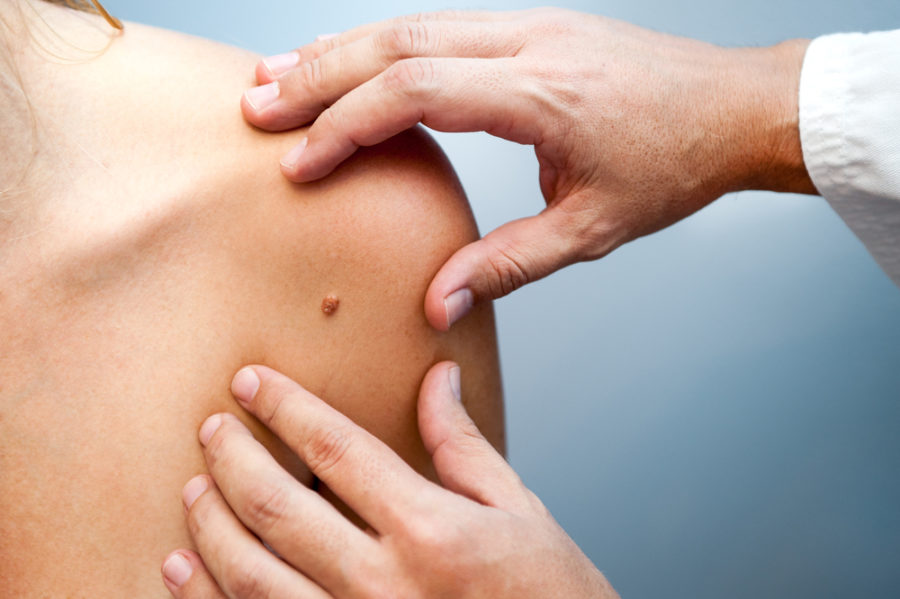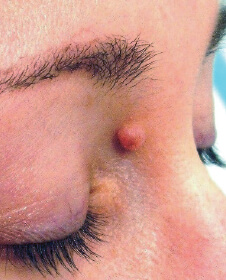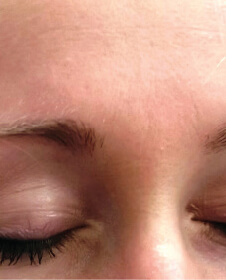Mole Removal and Mole Checks

If you’re worried, it’s worth checking.
Your skin is always changing, so it’s always worth checking! Wellington’s Upper Hutt Skin Clinic’s proven technology tracks skin changes, which means it’s the most effective way to detect melanoma in its early stages, when it’s most treatable. We achieve good cosmetic results with benign skin lesions, skin tags, warts, moles and sun spots.
As kiwis, we love to be outdoors and in the sun. Therefore, it comes as no surprise that New Zealand has high rates of skin cancer which continue to rise. Skin cancer is generally caused by over-exposure to the sun’s ultraviolet (UV) radiation. This is why it is so important to wear sunscreen with a high UV factor at all times when in the sun. There are certain skin cancers that can occur in areas that don’t see the sun. Skin cancer can manifest itself in different forms for different people, it is not always a black spot. It is therefore important to see your Doctor for regular skin checks.
How we can help
We use dermatoscopy to examine and identify suspicious skin lesions (moles/spots). This technology allows us to detect and treat potential skin cancers as early as possible. Our doctors are trained in the use of Dermatoscopes. These are hand held instruments which use epiluminscent microscopy to look deep into the skin. This allows our trained doctors to recognise the microscopic signs of skin cancer. It also gives confidence in checking that moles are normal and do not require excision.
Removal of Benign Skin Lesions
Wellington’s Upper Hutt Skin Clinic achieves good cosmetic results with benign skin lesions, skin tags, warts, moles and sun spots. Lesions are removed using Radiowave Ablation. This technique allows skin lesion removal with minimal scarring. The Upper Hutt Skin Clinic is one of the few clinics which provide radiofrequency surgery, using the Surgitron. The Surgitron is minimally invasive and requires no stitching following a procedure. These procedures are performed under local anaesthetic, administered by our trained Skin Cancer Doctors and nurses.
Benefits
- No stitches required
- Minimal scarring
- Multiple lesions can be treated in one appointment
Results

Before cosmetic mole removal

After cosmetic mole removal
If you are worried about any of your moles or skin lesions, get in touch with the Skin Doctors and Nurses at the Upper Hutt Skin Clinic today on 0800 Skin Clinic.
Upper Hutt Skin Clinic is located in the Upper Hutt Health Centre, just 25 minutes north of Wellington.
What if the Examination Tells Me I Might Have Skin Cancer?
Upper Hutt Skin Clinic are specialists in mole checks and mole removal with accredited doctors through The Skin Cancer College’s Accreditation Program. Our doctors will discuss the outcome of your examination and give their recommendation on the best form of treatment for you. They have many, many hours of experience in removing potentially dangerous moles and skin lesions. Rest assured, you are in trusted hands.
We will discuss any proposed treatment with you. This will include the type of procedure, cost, potential complications, expected outcome and aftercare. If a surgical option is available, they will discuss the type of excision and cost with you, together with other options. You will be given a full assessment of your risk of skin cancer and appropriate follow up investigations, and diagnostic aides will be used in the consult.
What are moles?
Moles are often referred to by clinicians as skin lesions. Other common skin lesions are freckles and skin tags. Skin lesions are benign (non-cancerous). It is quite normal to have between 10-40 moles by the time a person reaches adulthood. Moles can appear at birth, or develop at any age up to 30.
Moles can change over time and develop into melanoma, with a higher chance of this in those that have been on the skin since birth. Melanoma can be difficult to detect. If you have any concerns about your moles or freckles or you would like a mole or skin tag removed for cosmetic reasons, Upper Hutt Skin Clinic’s specialist skin doctors can help, with their advanced clinical equipment including Surgitron (which leaves minimal or no scarring).
What’s a “normal” mole?
Some moles remain the same throughout a person’s life, while others may even disappear over time. Moles can also change in appearance over time. They can grow in size, change colour, become raised from the skin or change shape. Moles can change over time and develop into melanoma, with a higher chance of this in those that have been on the skin since birth. Melanoma can be difficult to detect.
If you have any concerns about your moles or freckles or you would like a mole or skin tag removed for cosmetic reasons, our specialist skin doctors can help.
